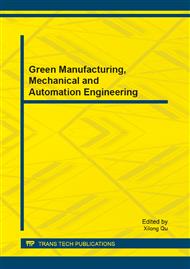p.476
p.480
p.484
p.489
p.493
p.497
p.502
p.507
p.512
Research on Improved Range of Passive Radio Frequency Identification Tag by Taking Advantage of Energy-Harvesting and Efficient E-Class Oscillator
Abstract:
Using energy-harvesting technology can make the work scope of passive radio frequency identification tag to achieve the maximum .The study put forward to collecting light from the solar cell share tag antenna area, that provides the power source except from the reader receive to electromagnetic power ,which to activate the label circuit. In order to make solar cell to the influence of the tag antenna to minimum ,so optimize it with electromagnetic simulation on its position .The collected dc power could convert into the radio frequency with the efficient E-class oscillator , as well as it could flow into the radio frequency identification tag terminal with the aid of the proper designed coupled circuit .The oscillation frequency is selected on the principle of not affecting the operation of label back scattering .The presented oscillator is showed in the simulations .The E-class oscillator is used together with other forms of collection technology ,such as thermoelectric collect machine.
Info:
Periodical:
Pages:
493-496
Citation:
Online since:
July 2013
Authors:
Price:
Сopyright:
© 2013 Trans Tech Publications Ltd. All Rights Reserved
Share:
Citation:


